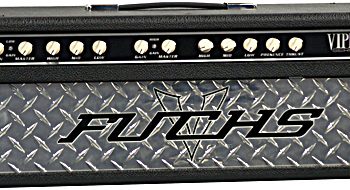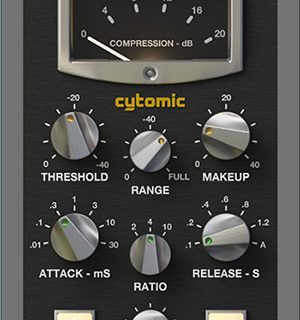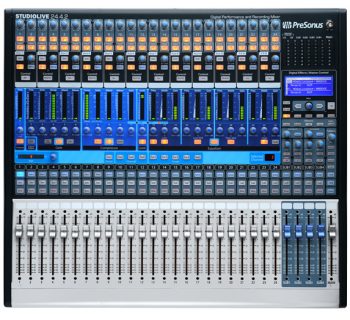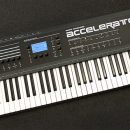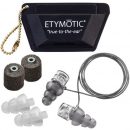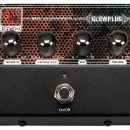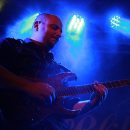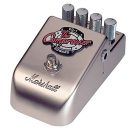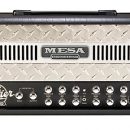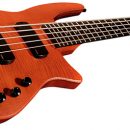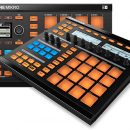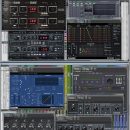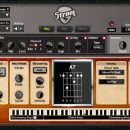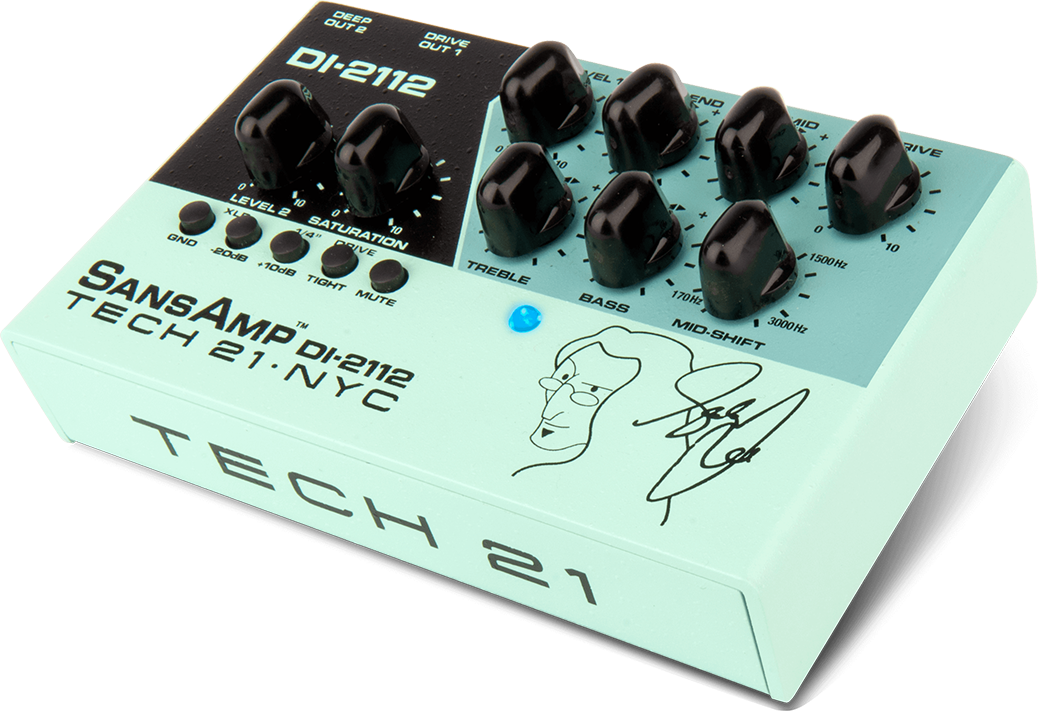 When it comes to bass amplification, Sweden’s EBS is renowned for delivering exceptional modern bass tone, and the HD360 provides the perfect balance of features and price for a pro-level bass amplifier.
When it comes to bass amplification, Sweden’s EBS is renowned for delivering exceptional modern bass tone, and the HD360 provides the perfect balance of features and price for a pro-level bass amplifier.
The HD360 doesn’t seem like it would have enough power for a typical bass rig, where modern digital power amps routinely offer 500 Watts or more. But EBS proves here that what really matters is good amp design, as the HD360 can power multiple speakers with ground-shaking presence, clarity, and volume. Fans of a tight, clean, punchy, modern bass tone will absolutely love this amp, and for the discerning bassist who wants an amp that shows off the tone of their instrument without unnatural coloring, you really can’t go wrong here.
Features
The HD360 marks the entry point into the premium range of EBS amp products. HD stands for High Definition, referring to the solid-state tone engine at work, and the package is housed in a beautiful black-with-blue-highlights, 2U rack enclosure. The power section delivers 360W RMS into 2 Ohms (or 180W into 4 ohms, 90W into 8 ohms), but have no fear. Before diving into the rest of the review we’ll tell you up front that the amp proved powerful enough to easily drive a 2x12 cabinet in a variety of rock/pop band situations.
Basic sound shaping has a straightforward front panel arrangement: Bass, Treble, and sweepable mid frequencies. These start at a center detent, and each band provides up to 15 dB of boost or cut (12 dB on the mids). The Bass control is centered around 100 Hz, Treble at 4 kHz, and the Mid sweep goes from 50 Hz—5 kHz, with a Q spread of 0.5.
The EQ section is augmented with a variety of additional controls to sculpt your sound: Bright, which attenuates the high frequencies in your tone and adds that “air on top” to your sound (up to 20 dB of boost at 10 kHz), and Drive, which enables you to take that legendary, pristine EBS tone and make it… not quite dirty, but to imbue it with some analog warmth and drive-related compression. The unique Character button, adjacent to the Gain control, provides an instant, predefined, mid frequency cut that scoops the mids in a classic U shape.
Many players tend to leave their EQ settings flat, and if you’re in that camp, you may appreciate the Filter Active switch, which bypasses the EQ section completely.
There is an onboard compressor/limiter, with single-knob functionality. The compression ratio increases as you turn it up, achieving a maximum 3:1 ratio, which isn't too much, and we like that. Subtlety is key, after all.
A dedicated tuner output is always active, and a line out lets you run the signal in parallel to a second power amp in case you need to drive additional cabinets for a larger rig.
The onboard DI provides multiple output options: dry (straight through from the input jack, no EQ/effects), the fully processed tone, and fully processed tone plus speaker cabinet simulation. There’s also a ground lift switch.
Phantom power! When using a stereo instrument cable instead of a traditional mono cable, the input jack provides 9V of phantom power, which can either power a single EBS effects pedal or an appropriately-wired bass with active electronics. As if that’s not cool enough, the effects loop also provides optional phantom power.
 |
A pair of Speakon jacks provide connectivity to speaker cabinets from 2-8 ohms, and an effects loop provides series or parallel operation.
There are two quarter-inch switch jacks for remote footswitch operation. Functions controlled are Character, Filter Active, Drive, and a mute function. EBS sells an optional EBS RM-4 footswitch, but the jacks can be used with any switching solution you prefer.
We tested the HD360 with the EBS ProLine 212 cabinet, which features two twelve-inch woofers and a single, two-inch, high-frequency driver. Frequency response is 30Hz–8kHz. The cabinet is beautifully constructed from 13-ply birch and spruce woods, is wrapped in black carpet, and features recessed handles and a metal grill. An attenuator on the rear let us adjust the level of the high frequency driver. Two Speakon connectors are provided for connection and pass-through.
Usability
 At only twenty pounds, the HD360 can serve as the core of a rig that doesn’t break your back.
At only twenty pounds, the HD360 can serve as the core of a rig that doesn’t break your back.
Operation was straightforward, short of remembering what EBS’s cleverly named features do (like Character and Filter Active). An input LED is provided to indicate appropriate input levels for the Gain control. EBS recommends adjusting the gain until this LED only lights up occasionally on strong hits/peaks.
The compressor was straightforward to use, and an associated LED showed when the compressor was working.
Our only complaint about this otherwise fantastic amp was the lack of a mute switch on the head itself. Without a footswitch connected, there is no muting the sound without either turning down the volume control or turning the power off.
Sound
The EBS HD360 delivers exceptional tone when you crave pristine bass amplification. Clean, articulate tone is what the HD360 is all about, and modern bassists will love the sound of this amp if they want the true tone of their bass and the strings to come through loud and clear.
We tested the HD360 paired with beautifully matched EBS ProLine 212 cabinet, and given the divine tone, we paired it with a variety of active and passive, low-noise, fusion-loving, prog-rock worthy instruments including the outstanding Carvin Brian Bromberg B25 five-string (active), Cort’s Jeff Berlin “The Rithimic” signature four-string (passive), and the mighty NS Design Radius CR5 (active).
With the EQ flat, there was no artificial coloring of the tone whatsoever, and we could really focus on examining every detail and nuance of our instruments’ sounds. Once we started playing with the EQ and character filter, the fun got serious. Cranking the low end and playing B-string anchored grooves, the HD360 delivered tone that could loosen the floor boards, punch us in the chest, and yet… let us hear every note! In fact, when pushing any and all of the EQ controls to their extremes—which we would never play in typical situations, this amp never lost its focused low end, and the sound never got harsh or brittle on top. We kept the high-frequency driver in the supplied EBS Proline 212 speaker cabinet at its default setting (it has attenuation on the rear of the cabinet in case you need more or less of that driver).
Sophisticated bassists will appreciate how chords come through crystal clear, and picking and slapping each reacted as expected. The slapping tone was a particular treat in that it was always dynamic and clear without any brittleness or breakup. We never once felt like we had to compromise or fight this amp to get a desired sound.
The compressor is subtle, only reaching a maximum 3:1 ratio when dialed to its extreme, and we loved that. When it kicked in, it was almost unnoticeable save for the LED indicating that we were hitting it with our signal. It never crushed our sound, but preserved our level and impact. If you’ve ever heard the sound of a compressor clamping down on your notes, fear not. You’ll never hear that in the HD360.
The Bright knob is pretty much irrelevant in this amp. It’s a high-pass filter that enhances frequencies well above 1k, and the only time we could really hear it make a difference was when specifically trying to create more air on the top in a studio setting. It was certainly quiet, never adding any noticeable noise, but the Treble control was so useful to the overall tone shaping that the Bright knob just didn’t have much to offer. In the context of actually playing with other musicians, you could crank this control to any setting and not really notice a difference in your tone. We generally just left it at noon or its zero value and forgot about it.
In keeping with the amp’s clean and subtle vibes, the Drive circuit emulates a tube emulation stage, and provides some additional compression to the bass tone, and a little bit of additional warmth, but doesn’t get heavy enough to use as a true distortion source (contrary to what the marketing description says). For real dirt, you’ll need to rely on your favorite pedal.
The Character switch provides a pre-set EQ curve adjustment that slightly boots the lows and highs while scooping out the mids. It definitely contributed to the sonic variety achievable in the HD360, and having this selectable on-the-fly from a footswitch makes it handy for big tone shifts within a song.
The onboard DI is outstanding. With options to include or bypass the amp’s EQ and effects loop, and another control for providing speaker simulation, we found no need to mic this amp in the studio, and in fact recorded an entire record using the simulated output during our review/evaluation period to great result.
Do you love vintage, Ampeg SVT-like tone? Sorry we made you read this much. EBS tone may not be for you! This is not a loose, rumbly, noisy, amp for your ‘60s tribute band and vintage J-bass. This is not an amp for laid back, sloppy, bar band weekend warriors. But for modern rock, pop, fusion, metal, and country, the EBS HD360 delivers kick-ass punch, clarity, and beautiful tone.
Documentation and Product Support
Although brief, the user’s manual does a great job explaining use of all of the amp’s controls. The only exception: it could use some additional information regarding speaker configurations.
Price
The EBS HD360 (MSRP $2,499.95) sold for approximately $1,300 when we began this review, but as we neared completion, we were informed that the MAP/street price had just been lowered to $1,000. This is a very competitive price for a professional, studio or tour-worthy bass amplifier.
The optional RM-4 footswitch sells for approximately $250, and is more costly than it should be. The EBS ProLine 210 cabinet (MSRP $1,599) that we tested with the HD360 sells for $900. At just over 49 pounds, it is light weight, and makes a beautiful match—sonically as well as aesthetically, to this amp.
Contact Information
EBS
www.ebssweden.com
Overall Rating - Product Summary
| Category | Value | Rating |
| Features | 20% | |
| Usability | 25% | |
| Sound | 25% | |
| Documentation & Support | 10% | |
| Price | 20% | |
|
|
||
| OVERALL RATING = 3.7, which earns it a WIHO Award!
3.6 stars or better: Outstanding, WIHO Award |
||




